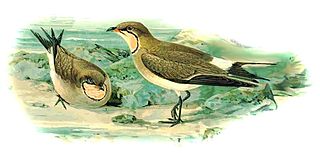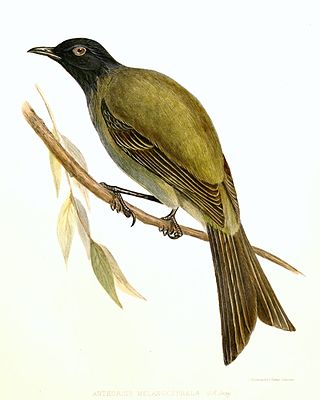
William John Swainson FLS, FRS, was an English ornithologist, malacologist, conchologist, entomologist, and artist.

John Gould was an English ornithologist who published monographs on birds, illustrated by plates produced by his wife, Elizabeth Gould, and several other artists, including Edward Lear, Henry Constantine Richter, Joseph Wolf and William Matthew Hart. He has been considered the father of bird study in Australia and the Gould League in Australia is named after him. His identification of the birds now nicknamed "Darwin's finches" played a role in the inception of Darwin's theory of evolution by natural selection. Gould's work is referenced in Charles Darwin's book, On the Origin of Species.
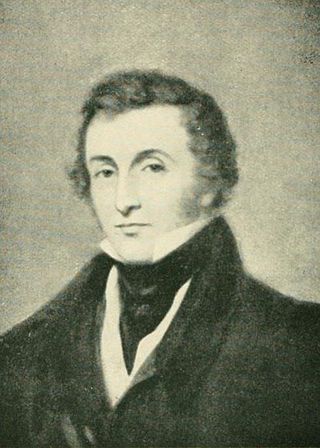
Sir William Jardine, 7th Baronet of Applegarth FRS FRSE FLS FSA was a Scottish naturalist. He is known for his editing of a long series of natural history books, The Naturalist's Library.

William Yarrell was an English zoologist, prolific writer, bookseller and naturalist admired by his contemporaries for his precise scientific work.

Johannes Gerardus Keulemans was a Dutch bird illustrator. For most of his life he lived and worked in England, illustrating many of the best-known ornithology books of the nineteenth century.

Henry Constantine Richter was an English zoological illustrator who produced a very large number of skillful coloured lithographs of birds and mammals, mainly for the scientific books of the renowned English 19th century ornithologist John Gould.
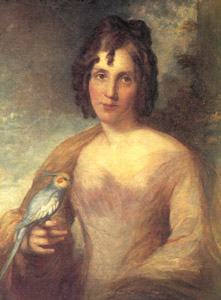
Elizabeth Gould,, was a British artist and illustrator at the forefront of the natural history movement. Elizabeth traveled and worked alongside her husband, naturalist and author John Gould. She produced illustrations and lithographs for ornithological works, including plates in Darwin's The Zoology of the Voyage of H.M.S. Beagle and the Goulds' seminal work The Birds of Australia. In total, Elizabeth is accredited to at least 650 works.

The Birds of Australia was a book written by John Gould and published in seven volumes between 1840 and 1848, with a supplement published between 1851 and 1869. It was the first comprehensive survey of the birds of Australia and included descriptions of 681 species, 328 of which were new to Western science and were first described by Gould.

Henrik Grønvold was a Danish naturalist and artist, known for his illustrations of birds. Grønvold was among the last natural history illustrators to publish lithographs.

Illustrations of the Family of Psittacidae, or Parrots is an 1832 book containing 42 hand-coloured lithographs by Edward Lear. He produced 175 copies for sale to subscribers as a part-publication, which were later bound as a book. Lear started painting parrots in 1830 when he was 18 years old, and to get material for his book he studied live birds at the London Zoo and in private collections. The latter included those of Edward Smith Stanley, later 13th Earl of Derby, who had a large menagerie at Knowsley Hall, and Benjamin Leadbeater, a taxidermist and trader in specimens. Lear drew onto lithographic plates for printing by Charles Joseph Hullmandel, who was known for the quality of his reproductions of fine art.

The expedition members were:

James Wilson of Woodville FRSE (1795–1856) was a 19th-century Scottish zoologist.

George Henry Ford aka G. H. Ford, was a South African natural history illustrator who joined the British Museum in 1837. He portrayed animals and produced the plates in Sir Andrew Smith's Illustrations of the Zoology of South Africa.
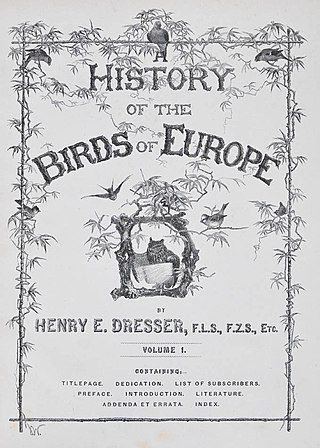
A History of the Birds of Europe, Including all the Species Inhabiting the Western Palearctic Region is a nine-volume ornithological book published in parts between 1871 and 1896. It was mainly written by Henry Eeles Dresser, although Richard Bowdler Sharpe co-authored the earlier volumes. It describes all the bird species reliably recorded in the wild in Europe and adjacent geographical areas with similar fauna, giving their worldwide distribution, variations in appearance and migratory movements.
Furred Animals of Australia is a general reference book, first published in 1931, that gives accounts of Australian mammals, the continent's often unique marsupial and placental mammal fauna. The text and research for the book was undertaken by the mammologist and museum curator Ellis Le Geyt Troughton. Colour plates for the work were produced by Neville W. Cayley, whose popular standard guide What Bird is That? inspired Troughton's working title What Mammal is That?. The second edition of the work, while dated 1943 on the title page, was issued by Angus and Robertson in 1944. It remained the only authoritative treatment of the continent's mammals to be readily available during the mid-twentieth century.















